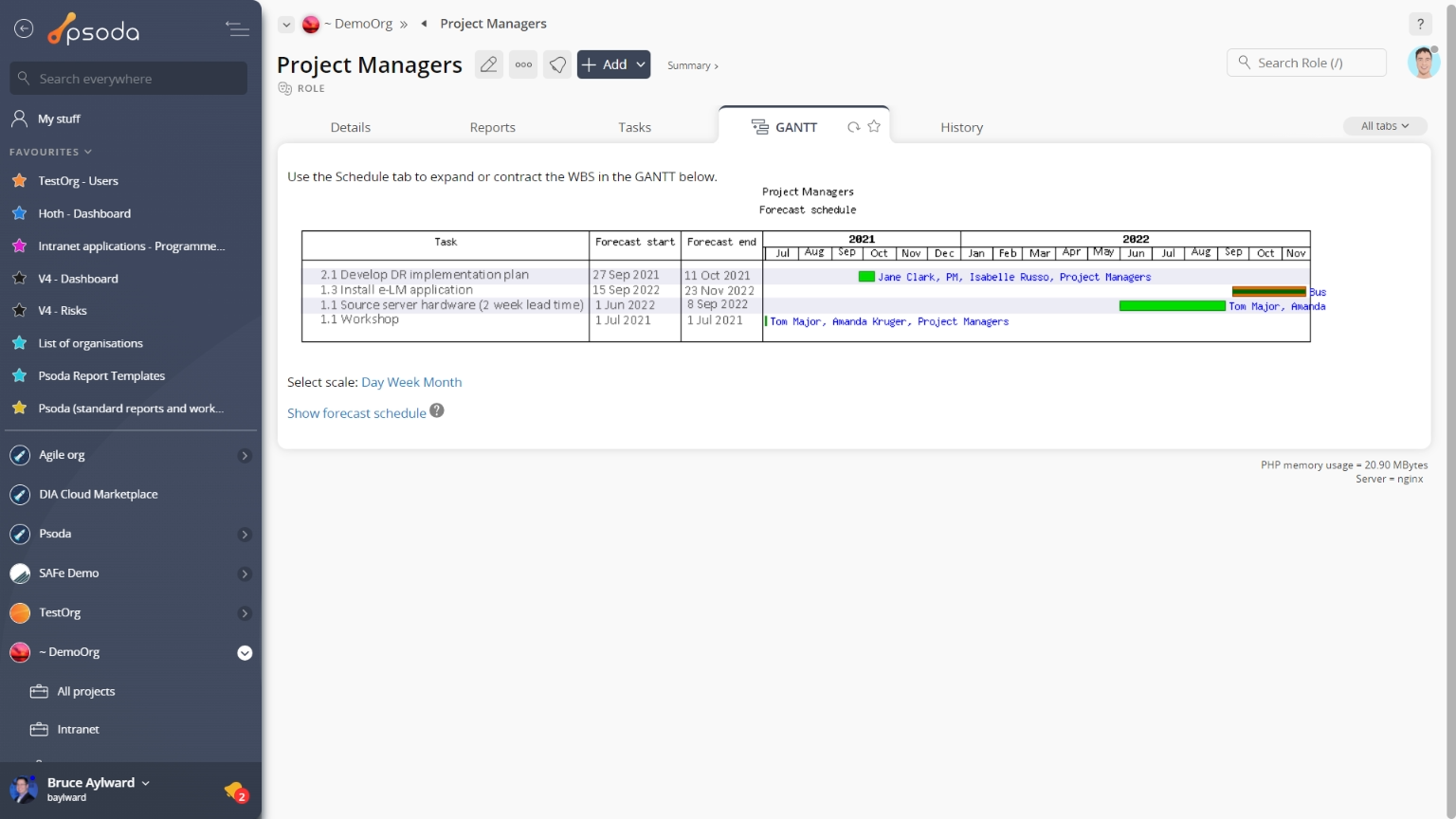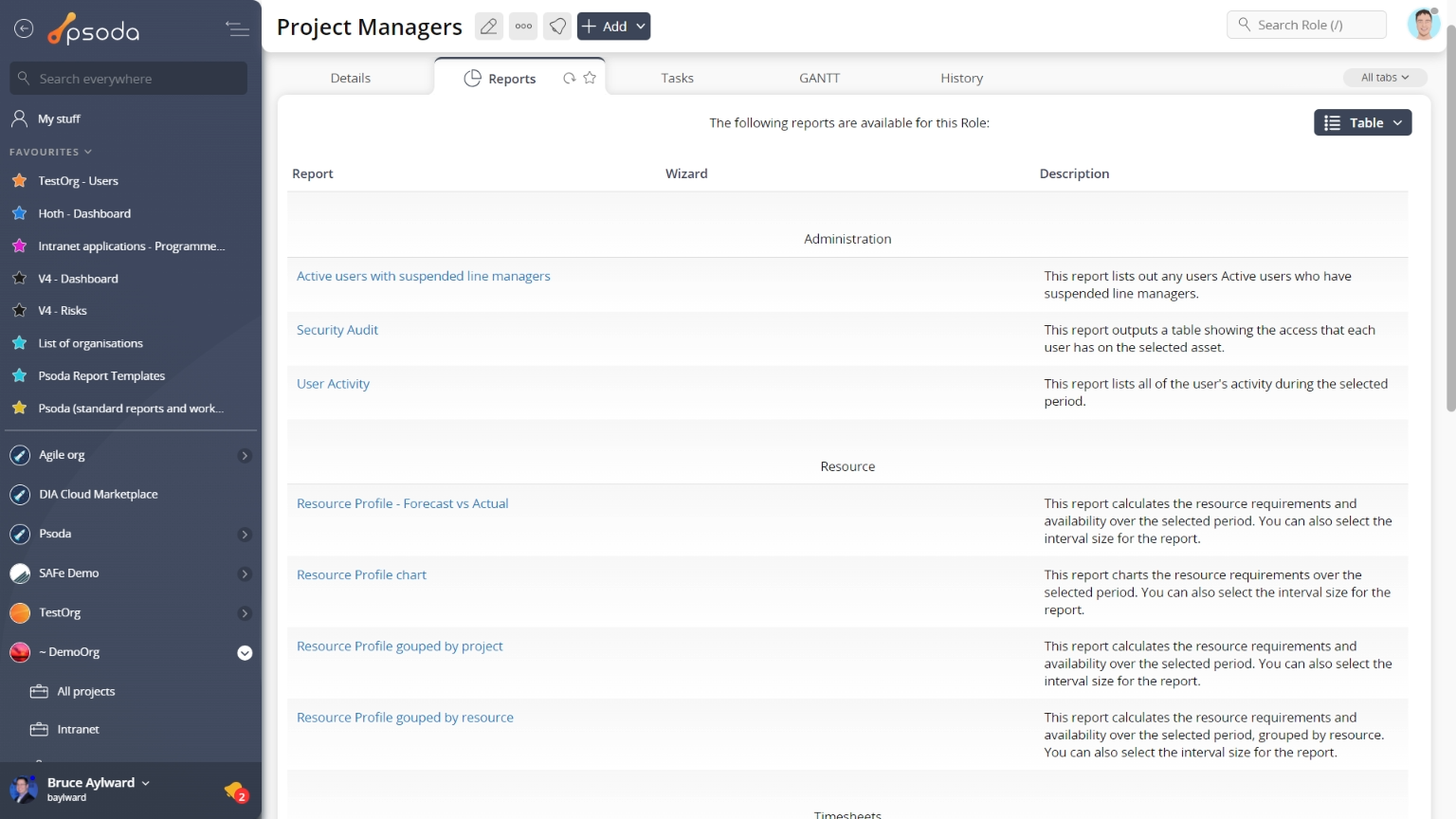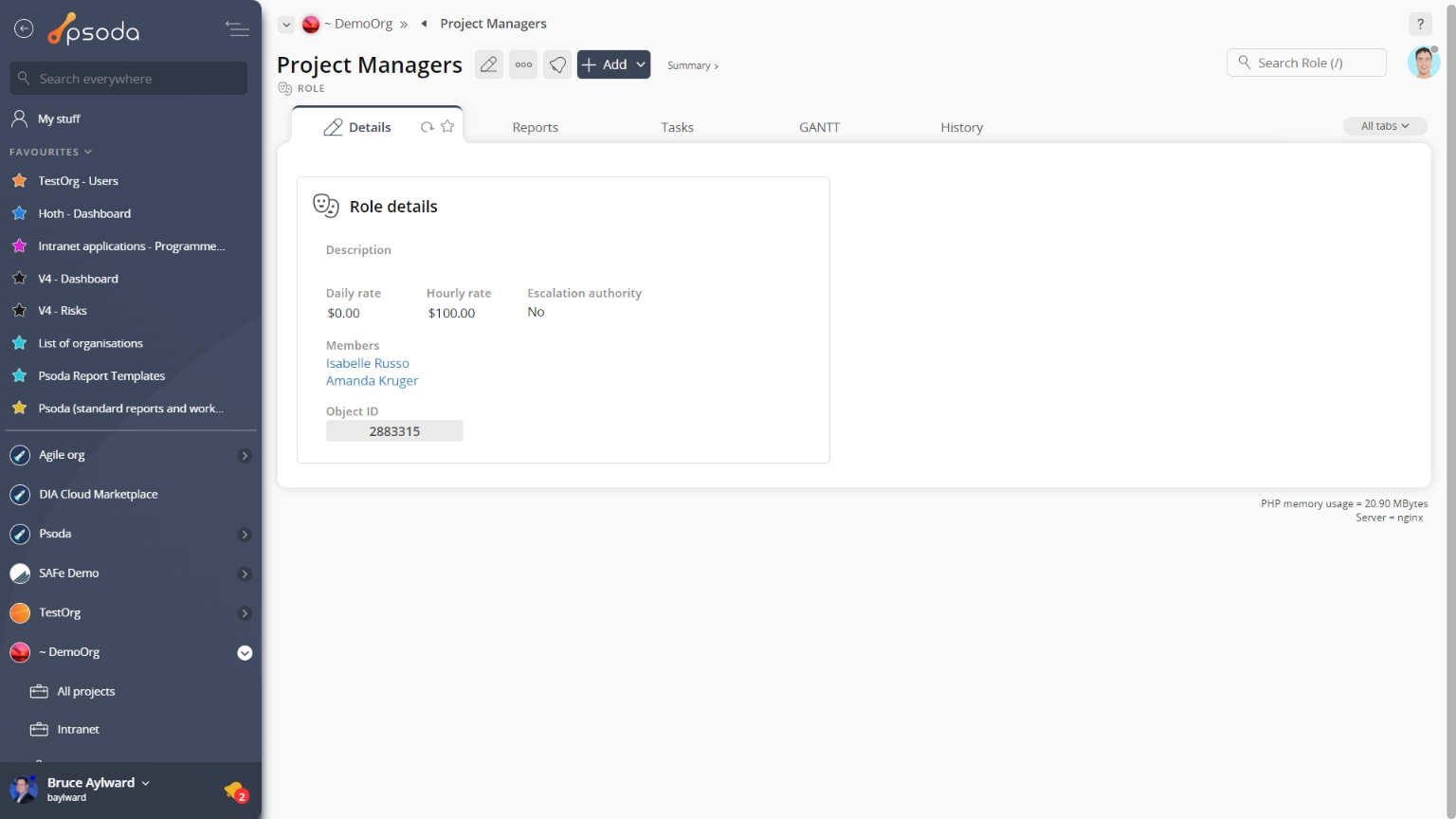
Figure 1 – Role view page
The top header area allows you to Attachments
Attachments
This tab shows an asset listing of all of the attachments that have been added to this role, as shown in Figure 2. By default, this table will present you with a number of details about the attachments such as the file’s name, attachment type, view the version and access a download link.
From the Actions column of this attachments table, you can act on individual attachments by 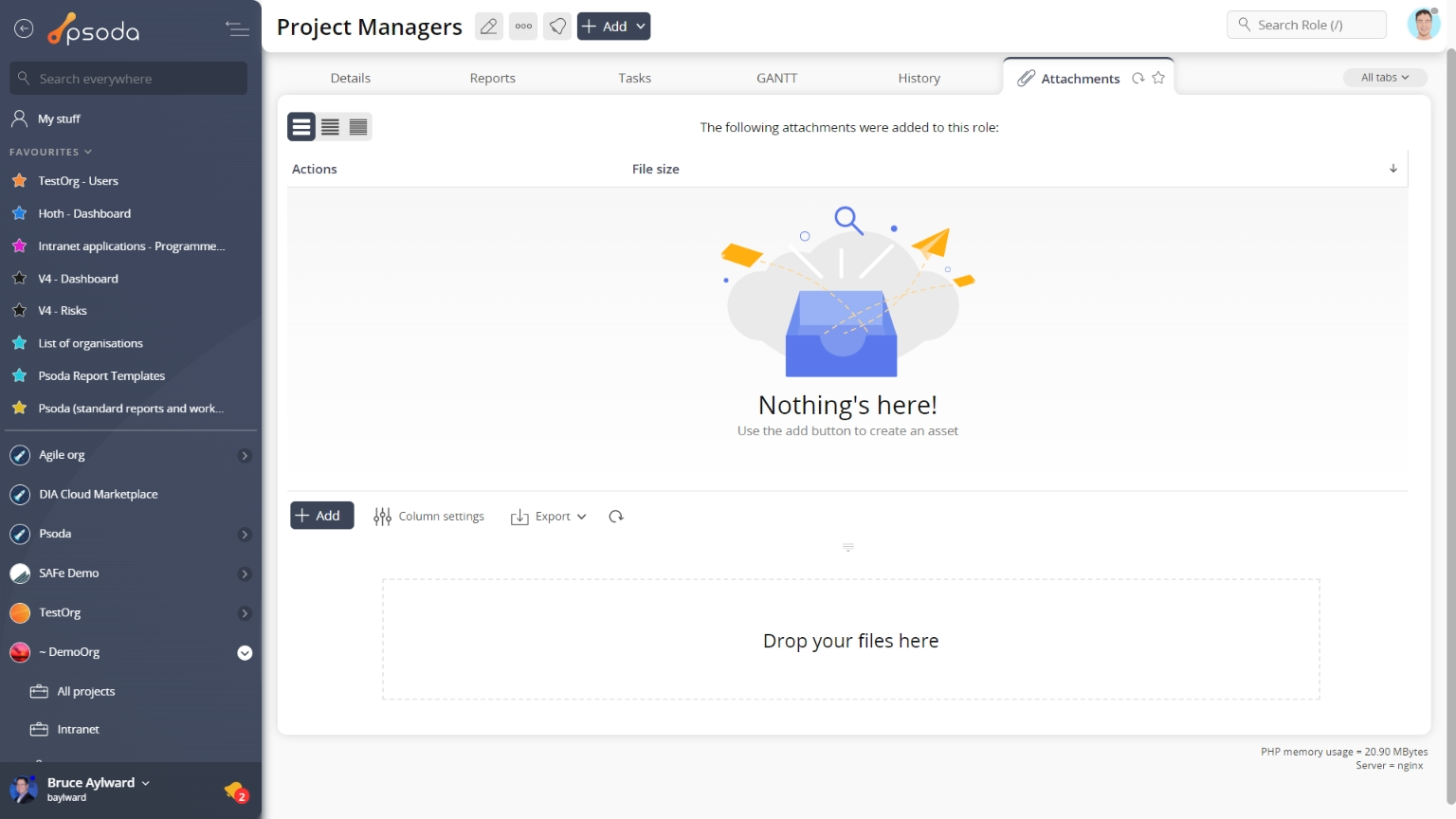
Figure 2 – Role attachments tab
Note that you can customise your table view by clicking the Comments
Comments
This tab shows an asset listing of all of the comments that 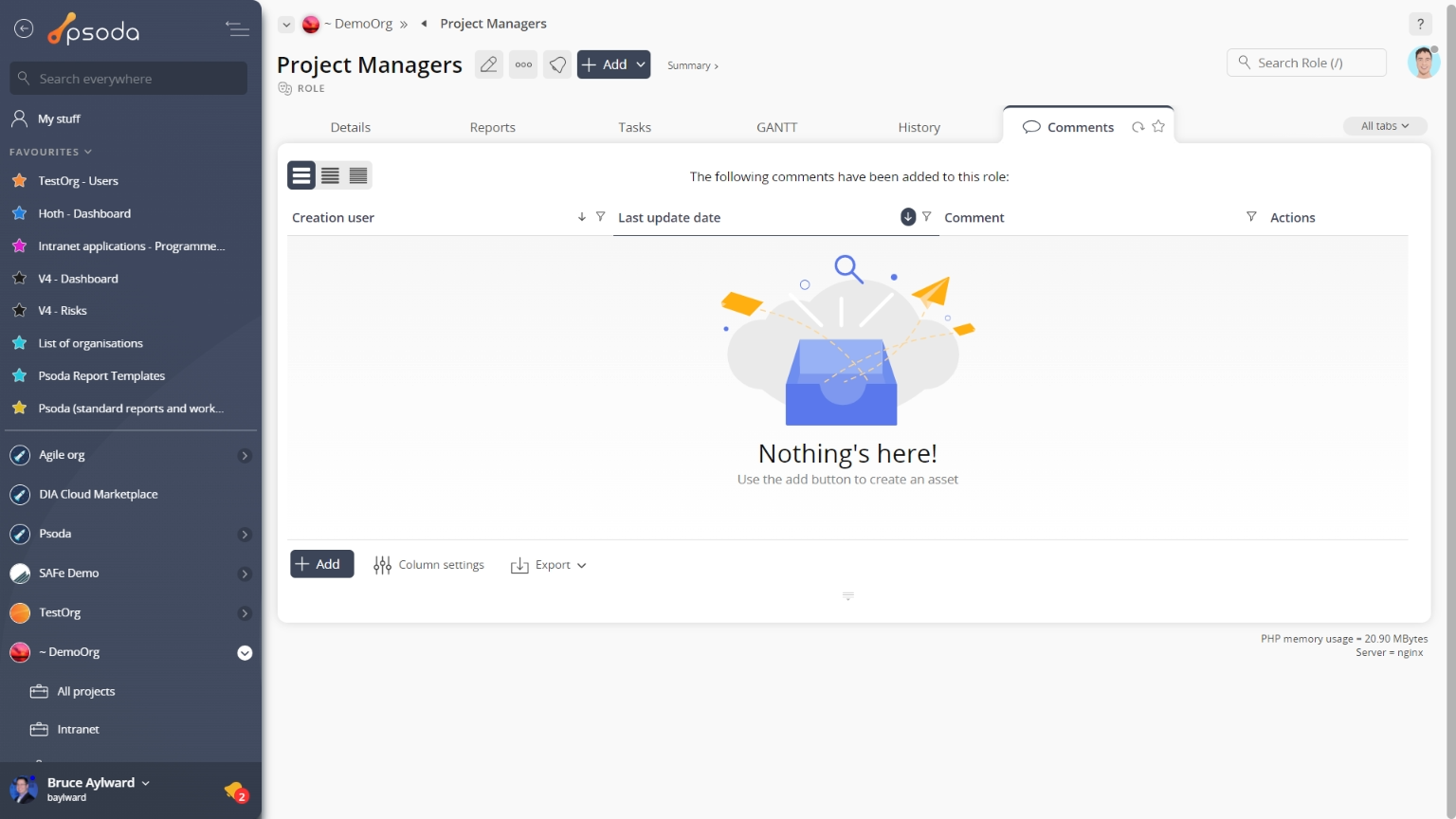
Figure 3 – Role comments tab
Note that you can customise your table view by clicking the GANTT
GANTT
This tabbed view shows the GANTT chart shown in Figure 4, generated by the information in your Tasks tab. By default, this table shows the name of the task group, task or milestone and it’s start and end dates.
On the right-most side of the chart there is a breakdown of tasks in a visual format than will span across a monthly, weekly or daily scale (this is setting dependent). The users who are allocated to each asset will have their names written next to this asset’s timeline.
Figure 4 – Role GANTT chart
At the very bottom of this tabbed view you are presented with a number of table information formatting options which will adjust the GANTT’s visible period, or scale, or whether it displays more than just task dates.In addition, the view tasks & milestones link will navigate to the Schedule tabbed view so that you can expand or contract the work breakdown structure viewed in the GANTT.
 History
History
This tab shows shows some basic history of the role, as shown in Figure 5. By default, this tab will present you with a number of details about the role’s history such as the creation date, creation user, last update date and last update user. If the role has been changed then this section will also show a table of all the changes that has been made, including the date of each change, the field changed, the value before the change and the user who made the change.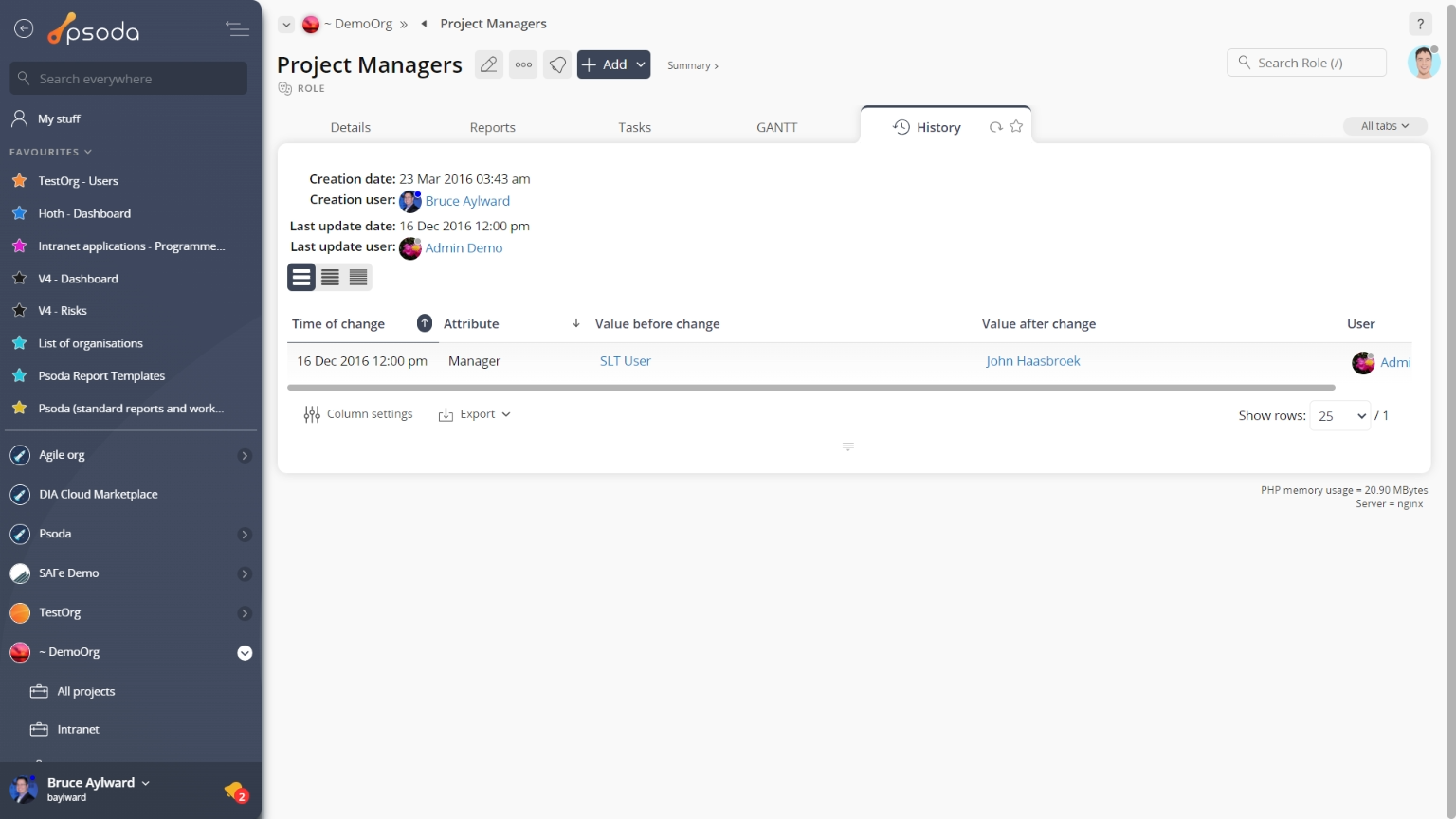
Figure 5 – Role history tab
Note that you can customise your change table view by clicking the edit button at the bottom of the change table. Here, you can also export this list of changes to
Excel or
CSV files.
 Reports
Reports
This tabbed view shows a listing of the reports as seen in Figure 6, listing any reports available for this role.
Figure 6 shows a portion of this alphabetical listing, and your specific list may vary slightly depending on if your System Administrator has created any new report templates that have been customised to be available to your organisation only.
Figure 6 – Role reports tab
This listing is unable to be customised, but provides the name of the report and a more detailed description of what information this report is built for and how the report is grouped.
Once you click on a report’s name, the run report form will popup. These popup forms vary depending on the report being run.
 Tasks
Tasks
This tabbed view shows the tasks table as seen in Figure 7, listing any Figure 7 – Role tasks tab
Note that at the bottom of this table you can add another task,
edit the table columns to show or hide asset information, or export this information to
Excel or
CSV files.
At the very bottom of this tabbed view, you can decrease/increase the number of actions listed by selecting the show/hide conflict highlights or hide/include planned tasks links.
 Workload
Workload
Instead of a table view, this tab provides a graphical view of availability of this role. The chart is generated from the information in the Tasks tab. Figure 8 below shows an example chart:
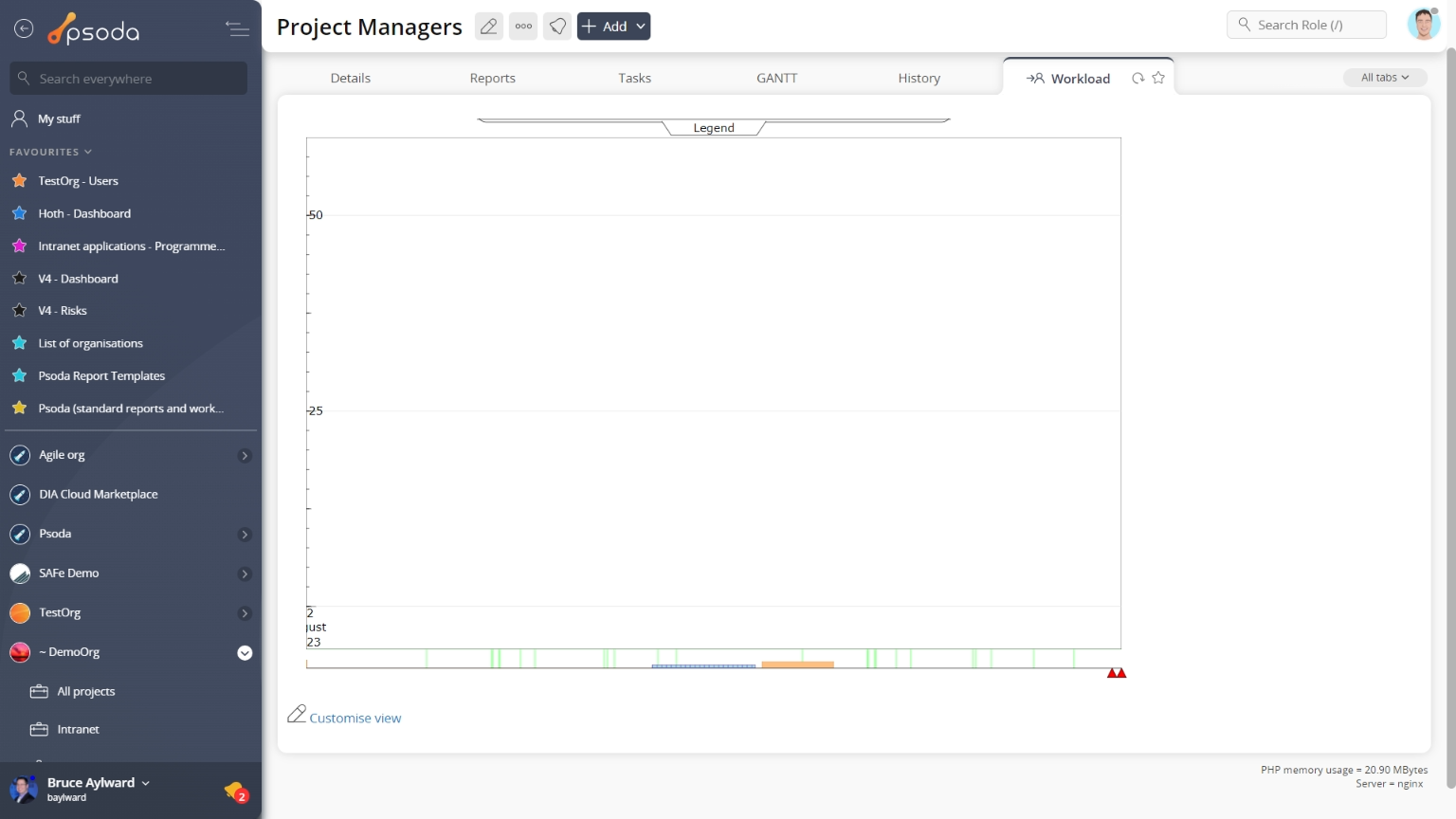
Figure 8 – Role workload tab
You can zoom in or out on certain times by using the red arrows at the bottom of the chart. Additionally, you can customize this graph view by selecting the customise option at the very bottom of this tab.
